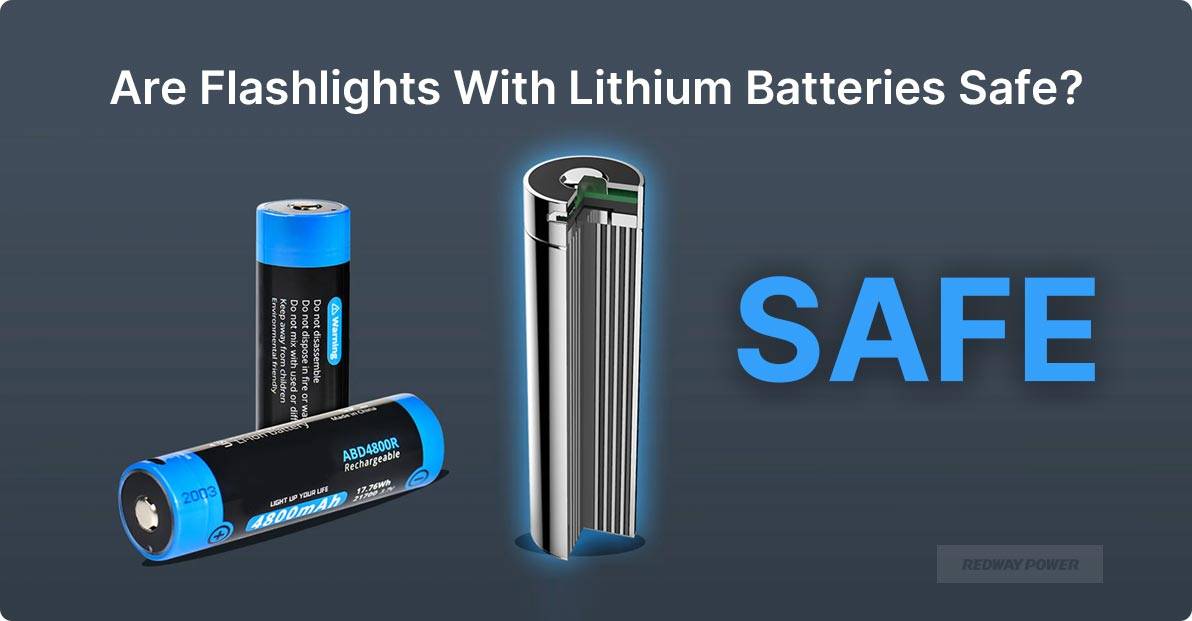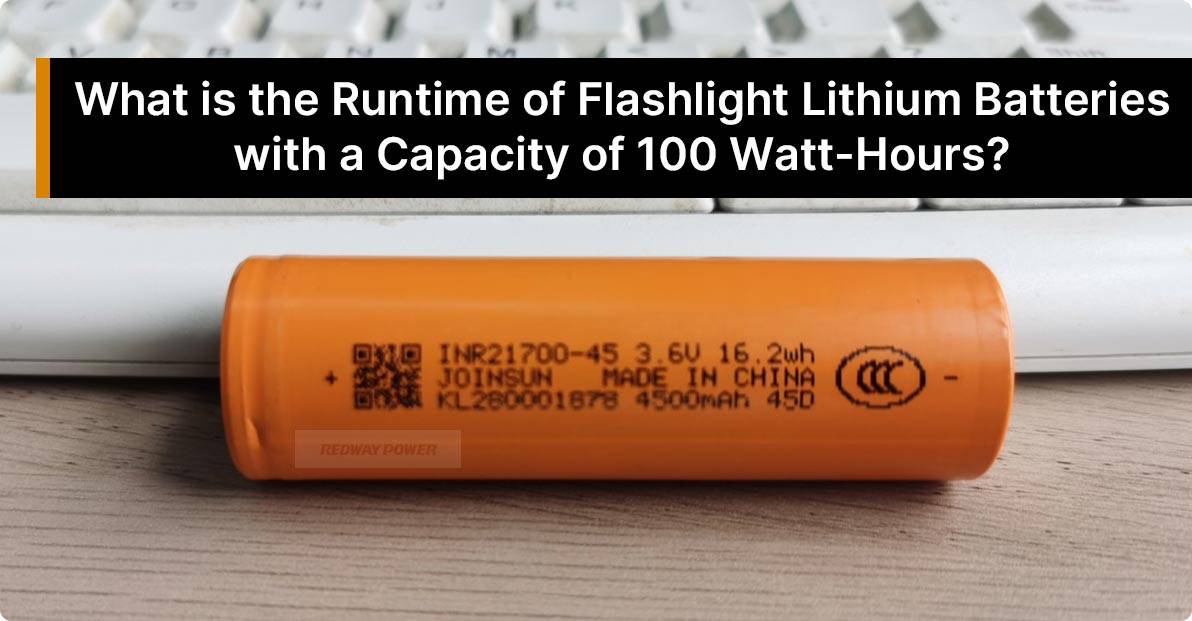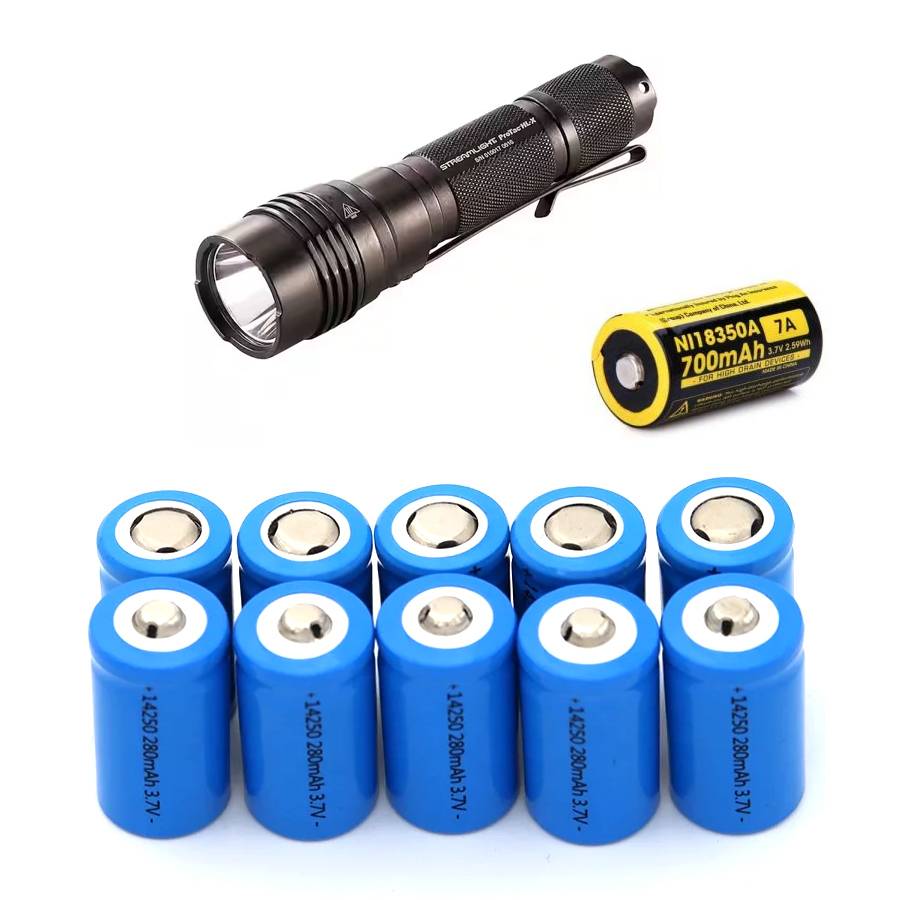Flashlight Lithium Batteries Factory Wholesale
Flashlight Lithium Batteries, One-Stop Solution
Redway Power specializes in crafting Flashlight Lithium Batteries, tailor-made for illuminating flashlights with precision. These rechargeable lithium-ion batteries, designed by Redway, serve as the reliable power source, offering high energy density, extended lifespan, and a lightweight design.
Ideal for both professional and consumer-grade flashlights, Redway Power's Flashlight Lithium Batteries ensure a dependable and long-lasting solution for various applications. With a focus on portability and convenience, these batteries exemplify Redway Power's commitment to providing advanced power solutions, ensuring that flashlights powered by their lithium batteries remain a trustworthy light source for outdoor activities, emergencies, and professional use.
What is the wholesale price of lithium battery?
You can click contact us or phone call us. We will give you multiple options of price.
Is Redway Power a trading company or factory?
Redway Power is a company with its own factory, integrating research, development, production, and sales.
How about the quality of Redway's LiFePo4 Battery product?
Redway Power boasts over 12 years of experience in LiFePO4 battery production and is an authorized supplier for CATL and BYD.
Can you do an OEM/ODM project?
Yes, we have engineers available to assist in designing and developing any related products.
What’s your MOQ?
MOQ varies according to battery voltage and capacity.
What payment terms can we accept?
We accept TT/Paypal/West Union, etc.
Flashlight Lithium Batteries Knowledge
Flashlights with lithium batteries are safe when handled properly. Advantages include compact size, longevity, and stable performance. Safety measures include using batteries with built-in protection circuits, choosing quality brands, and storing batteries correctly. Contrary to myths, explosions are rare, and leaving batteries in a flashlight doesn’t pose significant risks. Always follow safe practices for charging, storage, and disposal.

Let’s delve into why they’re considered safe:
Built-in Safety Features: Lithium batteries in flashlights often include protection circuits that prevent overcharging, over-discharging, and short circuits. These circuits ensure stable performance and reduce the risk of accidents.
Quality Assurance: Opting for reputable brands and high-quality batteries ensures safer usage. Cheaper or counterfeit batteries may lack essential safety features, increasing the risk of malfunction or damage.
Responsible Handling: Following safe practices such as avoiding physical damage to batteries, using correct chargers, and proper disposal after use contributes to overall safety. By adhering to these guidelines, users can enjoy the benefits of flashlight lithium batteries without compromising safety.
Leaving lithium-ion batteries in a flashlight can lead to self-discharge and potential leakage, affecting battery life and flashlight functionality. While convenient, it’s crucial to balance readiness with battery health. Regular inspection and proper storage in cool, dry conditions are recommended. If the flashlight is rarely used, consider removing batteries to prevent these issues.
Leaving lithium-ion batteries in a flashlight can seem like a convenient choice, but it comes with both positives and negatives.
Positive Aspect:
- Preserving Lifespan: Some believe keeping batteries in a flashlight ensures they’re ready when needed. It can be handy for immediate use during emergencies.
Negative Aspects:
- Self-Discharge: Batteries lose charge over time due to internal reactions, even without use.
- Leakage Risk: Unused batteries may leak, potentially damaging the flashlight or causing it to malfunction.
Best Practice:
- Regular Inspection: Check the flashlight and batteries periodically for signs of corrosion or leakage.
- Storage Conditions: Store them in a cool, dry place to maintain performance. Extreme temperatures can affect battery health.
- Usage Patterns: For seldom-used flashlights, consider removing batteries to prevent self-discharge and leakage.
Battery Management Systems (BMS) greatly enhance the safety and efficiency of flashlight lithium batteries. They monitor cell conditions, prevent overcharging, manage temperature, and balance voltage. BMS also optimize charging and discharge processes, extending battery life and ensuring reliability. With BMS, flashlight batteries offer improved safety, efficiency, and longevity, crucial for reliable illumination in various settings.
Here’s a simple breakdown:
Safety First:
- BMS continuously checks each battery cell’s condition to prevent issues like overcharging or overheating, which can lead to battery failure or fire.
- It acts as a safeguard against hazards by monitoring temperature, voltage, and current, ensuring stable and safe operation.
Efficiency Boost:
- BMS optimizes the charging and discharging processes, making them more efficient and preventing energy wastage.
- It manages power flow during use, ensuring that the battery operates at its best without straining or overheating.
Long-Term Reliability:
- With BMS in place, flashlight batteries last longer and provide consistent performance over time.
- This reliability is crucial for flashlights used in various situations, from outdoor adventures to emergency situations.
The runtime of a 100 watt-hour flashlight lithium battery, with a capacity of about 27 ampere-hours, is approximately 5.4 hours when powering a 5-watt flashlight. It’s calculated by converting the battery capacity to ampere-hours and dividing it by the power consumption. Actual runtime may vary due to flashlight efficiency.
The runtime of flashlight lithium batteries with a capacity of 100 watt-hours (Wh) depends on several factors, including the power load (in watts) drawn from the battery and the efficiency of the flashlight. Let’s calculate it:
First, we need to convert the battery capacity from watt-hours (Wh) to ampere-hours (Ah). We can use the formula:
Battery Capacity (Ah) = Battery Capacity (Wh) / Battery Voltage (V)
If we assume a common voltage of 3.7V for lithium batteries, the conversion is:
Battery Capacity (Ah) = 100Wh / 3.7V ≈ 27Ah
Next, we consider the power load (in watts) drawn from the battery. Let’s assume a typical flashlight power consumption of 5 watts (for an LED flashlight).
Now we can calculate the runtime using the formula:
Runtime (hours) = Battery Capacity (Ah) / Power Consumption (A)
Substituting the values:
Runtime = 27Ah / 5A = 5.4hours
Therefore, a flashlight powered by a 100 Wh lithium battery (converted to approximately 27 Ah) can run for approximately 5.4 hours with a 5-watt power load. Keep in mind that actual runtime may vary based on flashlight efficiency and other factors.

Alkaline flashlight batteries typically last 20-80 hours, depending on brightness. Replace them every two years or sooner based on usage. For unused flashlights, change batteries every few months to maintain freshness and prevent corrosion. Store spare batteries in a cool, dry place for longevity.
Let’s break it down:
Battery Lifespan:
- Alkaline batteries, commonly used in flashlights, last between 20 and 80 hours, depending on brightness settings.
- Higher brightness settings drain batteries faster, lasting around 20 hours, while lower settings can extend battery life up to 80 hours.
Maintenance Tips:
- It’s advisable to replace batteries every two years to ensure reliability.
- For flashlights not in regular use, swapping out batteries every few months helps maintain freshness and prevent corrosion.
Remember, regular maintenance ensures your flashlight is ready when you need it most!
Lithium-ion batteries pose fire risks due to internal short circuits, external heat exposure, physical damage, improper charging, and reactions with water. Heat can trigger thermal runaway, causing batteries to catch fire or explode. Proper storage, handling, and charging practices are crucial to prevent accidents, emphasizing safety precautions even when batteries are not in use.
Let’s break down why lithium-ion batteries might catch fire even when not in use:
Internal Short Circuits:
- Inside the battery, there are tiny parts called cells. If these cells have problems, like manufacturing errors or damage, they can cause a short circuit.
- This short circuit makes the battery heat up really fast, potentially leading to a fire or even an explosion.
External Heat Exposure:
- Leaving batteries in hot places, like in direct sunlight or near heaters, can make them catch fire.
- Heat makes the battery chemicals go crazy, leading to a dangerous situation where the battery might burst into flames.
Improper Charging and Handling:
- Using the wrong charger or overcharging the battery can stress it out and make it prone to catching fire.
- If you don’t handle batteries carefully, like dropping them or bending them, it can also increase the chances of a fire.
In summary, even though lithium-ion batteries are mostly safe, they can still be risky if not treated properly. It’s important to handle and store them with care to avoid accidents and stay safe.


